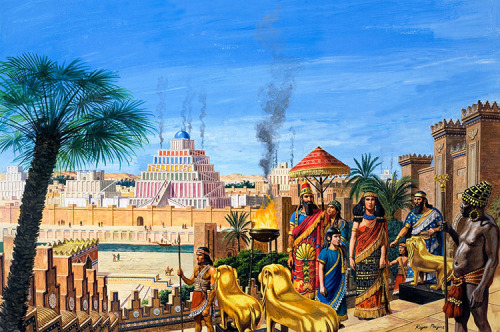dkfindout.com/us/history/mesopotamia/babylon/
The Neo-Babylonian Empire
The Neo-Babylonian Empire formed when Nabopolassar gained a lot of control over a great portion of Babylonia in a sort of uprising. The northern region of Babylonia was one of the only areas
Nabopolassar had difficulty securing. Because he could not fully gain control over the old Empire, he had to deal with the Assyrians, who were occupying the land at the time.
In order to help secure Babylonia again, Nabopolassar created an alliance with a few other Empires, and they fought off the Assyrians together, finally allowing the Babylonians to have their
empire back ("Babylonian Empire").
Nabopolassar's son, Nebuchadnezzar II, became leader after his father died, and was one of the Neo-Babylonian's greatest leaders. Under his rule, many more structures were erected within the
of Babylon, and his abilities as leader also elevated the Empire to a very dominant one just like it was during Hammurabi's rule. Nebuchadnezzar II also led powerful armies that took much land,
both former and new, for the Neo-Babylonian Empire ("Babylonia and Assyria"). More about Nebuchadnezzar II can be read here.
The Neo-Babylonian Empire faced a similar downfall to the original empire before it. After Nebuchadnezzar II died, the next few rulers were poor, and the citizens of the Empire grew discontent.
After a few years of decline, Cyrus the II of Persia was able to capture the city of Babylon, and begin to reign over the failing Empire. This would be the end of the proper Babylonian Empires.
The Neo-Babylonian Empire accomplished many great tasks throughout its short lifespan of less than 100 years, but it ultimately could not learn from the mistakes of the empire it built off of
years and years before it. Despite the efforts of the Babylonians throughout both of the major empires, their civilization failed to stand the test of time ("Babylonia and Assyria").
 https://weaponsandwarfare.com/2016/11/02/the-neo-babylonian-empire/
https://weaponsandwarfare.com/2016/11/02/the-neo-babylonian-empire/


